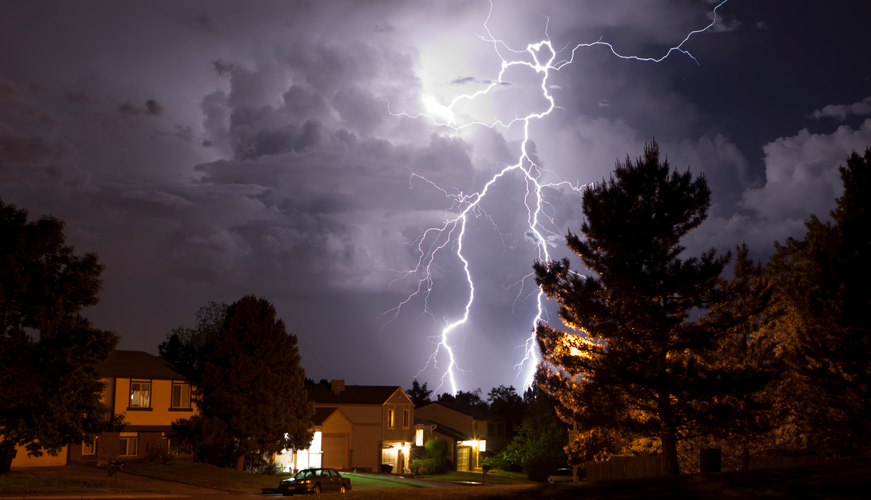Lightning has fascinated and frightened humanity for centuries, sparking curiosity, myths, and even groundbreaking discoveries. While many people credit Benjamin Franklin with proving that lightning is a form of electricity, the reality is more complex. Franklin’s famous kite-and-key experiment did not involve a dramatic lightning strike, as often depicted—an event like that would have been fatal. Instead, he observed a small electrical spark when the key came into contact with an electrically charged environment, confirming that lightning carried electrical energy. Though he wasn’t the first to link lightning with electricity, Franklin’s work laid the foundation for one of the most critical inventions in electrical safety: the lightning rod.
The Invention of the Lightning Rod
Although Franklin wasn’t the first to discover that lightning was electricity, he did invent the lightning rod, a crucial innovation that has protected countless structures from lightning damage. A lightning rod is a metal conductor, typically about one inch in diameter, that extends above a building and is connected to a conductive ground system via a copper or aluminum wire. This setup provides a low-resistance path for electricity to safely reach the ground, preventing power surges, fires, and structural damage.
How Lightning Causes Power Surges
Power surges from lightning strikes can cause severe damage to homes, even if the house isn’t directly struck. When lightning strikes a power line or telephone line connected to a home, it can send a surge of excess electricity through the system. These surges can fry electronics, damage circuits, and melt wiring insulation. In 2022 alone, U.S. homeowners filed 62,189 lightning-related insurance claims, resulting in $950 million in losses.
How to Protect Against Lightning-Related Power Surges
To mitigate the risks posed by lightning-induced power surges, consider these protective measures:
- Install Lightning Arresters: These devices divert excess electricity away from home wiring, reducing the risk of damage.
- Use Surge Protectors: Equip all major appliances and electronics with surge protectors to shield them from sudden voltage spikes.
- Unplug Sensitive Devices: During storms, unplugging devices like computers and televisions adds an extra layer of protection.
- Consider a Surge Protection Plan: Investing in a comprehensive plan can provide financial security in case of severe damage.
Everyday Power Surges: A Hidden Threat in Your Home
While lightning is a well-known cause of power surges, most surges actually originate from within a home. Appliances cycling on and off—particularly large ones like refrigerators, washing machines, and HVAC systems—cause small but frequent surges. Over time, these surges slowly degrade appliance wiring and electronic components, leading to premature failure.
How to Protect Against Internal Power Surges
Implement the following strategies to safeguard your home from internal power surges:
- Install Whole-House Surge Protectors: These devices are installed at your electrical panel and offer comprehensive protection against both internal and external surges.
- Use Point-of-Use Surge Protectors: For sensitive electronics, use surge protector power strips that meet safety standards.
- Upgrade Outdated Wiring: Ensure your home’s wiring meets current safety codes to handle modern electrical loads efficiently.
- Limit Simultaneous Use of High-Power Appliances: Avoid running multiple high-energy-consuming devices at the same time to reduce the risk of internal surges.
The Role of Surge Protectors
Surge protectors are essential devices that shield your electronics from voltage spikes. They work by diverting excess voltage away from connected devices, preventing potential damage. It’s crucial to understand that not all power strips offer surge protection; look for devices specifically labeled as surge protectors.
Types of Surge Protectors
- Standard Surge Protector Power Strips: These are common in households and provide basic protection for multiple devices.
- Whole-House Surge Protectors: Installed at the main electrical panel, these offer extensive protection for all appliances and outlets in your home.
- Uninterruptible Power Supplies (UPS): These devices provide surge protection along with battery backup, ensuring continuous power during outages.
Best Practices for Using Surge Protectors
- Regular Inspection: Periodically check surge protectors for signs of wear or damage and replace them as needed.
- Proper Load Management: Avoid overloading surge protectors by connecting too many high-wattage devices.
- Avoid Daisy-Chaining: Do not connect multiple surge protectors or power strips together, as this can create fire hazards.
- Ensure Proper Grounding: Verify that all surge protectors are connected to properly grounded outlets to function effectively.
By implementing these measures and understanding the importance of surge protection, you can safeguard your home and appliances from unexpected power surges, ensuring longevity and safety for your electrical devices.



